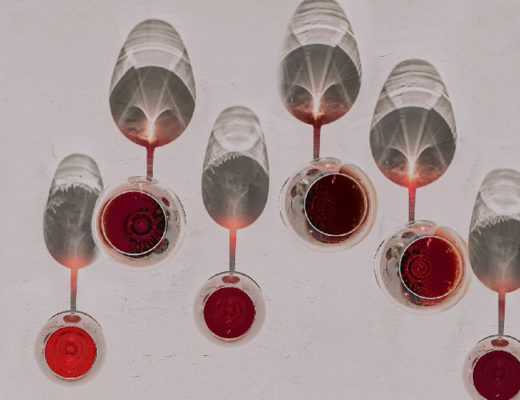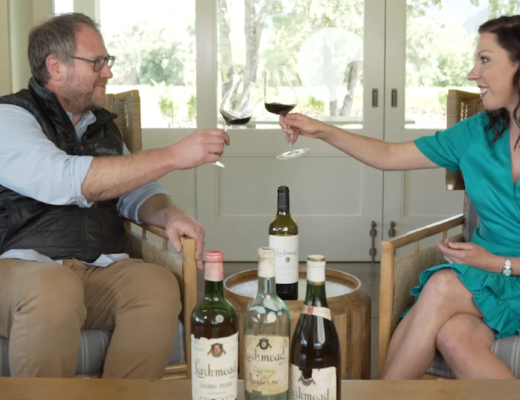Port, the flagship fortified wine of Portugal’s Douro Valley, is one of the most diverse and fascinating types of wine in the world. It encompasses everything from cocktail-friendly white Port to complex vintage Port that can age for a century or more.
Though all Ports share a sweetness and warming, spirited finish, different winemaking techniques make for a seemingly endless, and therefore intimidating, range of styles. But it is actually easy to recognize the distinctions between Ports, and classify them in three broad categories. Once you do that—whether you pour Port regularly or have never popped a bottle—you’ll always be able to select and serve the right one.
What is Port?
Often co-opted as a term for sweet fortified wines in general, true Port comes the region in northern Portugal surrounding the Douro river and its tributaries. It’s traditionally shipped through the city of Porto, from which it derives its name. One of the oldest delimited wine regions in the world—its boundaries were set in 1756—Port has evolved over time to encompass multiple variations. However, all Port is fortified, meaning brandy is added during the winemaking process, which raises the alcohol level to 19-21% by volume. It is generally a little higher in alcohol than Sherry, another fortified wine, and unlike Sherry (which is often dry) the vast majority of Port is made in a sweet style. For reference, Port is about 20% LESS sweet than Coca-Cola, and the best examples show an acid balance that keeps them from being too heavy or cloying.
Port is made from a blend of grape varieties indigenous to Portugal. Over 50 are allowed in the wine, the most important being Touriga Nacional, Touriga Francesca, Tinta Roriz, Tinta Barroca, and Tinta Cao. The first, Touriga Nacional, is not just the dominant driver of quality in top Port bottlings, but is used for Portugal’s most expensive dry reds, and is so well-regarded internationally that there is currently a petition in France to let growers in Bordeaux experiment with plantings.
Styles of Port
One can broadly think of Port in three main categories: Ruby, Tawny, and Other. Ruby Ports are aged briefly to retain their primary fruit characteristics (generally a ripe mix of black and blue fruits, with fresh spices), and are expected to be consumed immediately (like a Ruby Reserve) or develop further in the cellar (like a Vintage Port). Tawny Ports are aged for extended periods of time in the cellar, before bottling, to achieve a developed, oxidative character (toffee, dried fruits, toasted nuts—more intensely the longer its aging), and do not develop greater complexity after bottling. Finally, there are other, often harder-to-find styles of Port, like white Port, rose port, and garrafeira Port, which is aged in oversized glass bottles.
Ruby Port Styles
Ruby and Ruby Reserve Port—Basic ruby Port and the more concentrated ruby reserve Port are aged for between two and four years in very large, neutral vessels. This short aging is meant to maintain the purity of the wines’ youthful black fruits, but often leaves them with a fierier character from fortification. Ruby Port is the entry level of this category, designed for everyday consumption and cooking, and will be labeled “Ruby.” Ruby reserve is a step up in complexity and weight, and is generally sold under proprietary brand names like Six Grapes by Graham’s or Black by Quinta do Noval—and not labeled “Ruby reserve.” Both styles blend multiple vintages to maintain a specific house style, and are best consumed immediately. Neither will develop significantly in the bottle.
Late-Bottled Vintage Port—LBV Port comes from a single vintage, and was held an extra two years in the barrel to develop further roundness and subtlety before bottling— thus “bottled late” for more immediate enjoyment. Like vintage Port, LBV Ports can develop further complexity in bottle if cellared, but lack the extreme concentration and tannin of vintage Port to allow them to age for nearly as long. However, they are more affordable than vintage Ports, and ready to be consumed upon release.
Vintage Port and Single-Quinta Vintage Port—Vintage Port represents the pinnacle of Ruby style ports. Sourced from the best vineyards, they are highly concentrated, complex, and dense, with grippy tannins, ripe black fruit, and spice notes in their youth. Cellared over decades, they can develop a leathery and earthy complexity, and will turn silken in texture and show nutty, dried-fruit, and toffee flavors with extreme age. Vintage Port is only made in exceptional years, about three times a decade on average, and producers traditionally blend fruit from multiple estates within their portfolio to build in the greatest complexity possible. Single-quinta vintage Port, literally “single estate”, comes from a specific property. The best show a deep sense of terroir, are usually produced every vintage, and will always carry the name of the property on the bottle. They offer a good value alternative to rarer and more expensive Vintage Port, and cellar nearly as well.
Tawny Port Styles
Tawny and Tawny Reserve Port—Aged in smaller barrels for greater exposure to oxygen and development of nutty, toffee, and caramel aromas, tawny Port is named for the more tawny-orange color the wine presents in the glass. Basic tawny is aged for the shortest period of the category, blended to a specific house style, and can retain some primary cherry fruit and fiery alcoholic notes to complement its nuttiness. Tawny reserve is aged for slightly longer, giving it greater concentration. Like ruby and ruby reserve Ports, they are both meant to be consumed upon release.
Tawny Port with a stated Age (10, 20, 30, and 40-year old)—The age indication on this style of Tawny Port refers to the level of nutty, caramel, and eventually deeply savory and toasted-walnut rancio notes one can expect from the bottle. While stated-age Ports are blended from multiple vintages to maintain a specific style, the goal is to express the characteristics of wines cellared in small casks for the corresponding number of decades. Thus, they will only show one of four designations—10, 20, 30, or 40-years—on the label. Also, having developed in the cellar, these aren’t meant to improve substantially in bottle, and are best consumed upon release.
Colheita Port—Colheita refers to a tawny Port from a single vintage. They are uncommon, representing less than 2% of Port production, and are the highest tier of quality for Tawny Port, showing great concentration and complexity. Unlike the more general style of aged tawnies, colheita Port will show both its vintage of origin and the year it was bottled, which reveals the exact number of years it developed in the barrel. Like aged tawny, colheita Port’s character comes from the time in cask, and while they hold that character for some time, they do not improve greatly after release.
Other Port Styles
White Port—Popular within Portugal for white port tonic cocktails—a refreshing way to beat the heat of the region without being weighed down by the extra alcohol of gin or vodka—most white port is dry, youthful, and fruity. However, one might encounter bottlings done in aged and colheita styles—similar to tawny port, but with white grapes.
Rose Port—the newest style to the market is pink colored Port. Pioneered by the house of Croft, rose port shows primary fruit, a sweet palate, and almost no tannins. It can be a great component in crafting cocktails, for those willing to experiment, and pairs well with a number of cheeses when served chilled.
Garrafeira Port—A unique style, garrafeira port is aged in barrel before spending most of its life in the cellar in oversized glass bottles, giving it some of the primary fruit of vintage port, but substantially softer tannins. Niepoort is the only major house currently producing this style.
Serving Port
With so many styles of Port, there are naturally variations in how best to serve them. Ruby Ports are best served just below room temperature, at about 60o F, as an accompaniment to chocolate, mild cheeses, or fruit tarts. Tawny Port is traditionally served colder, between 48-52o F, either as an aperitif, or paired with caramelly or nutty desserts. Tawny Port also pairs nicely with a fine Maduro tobacco cigar.
Since most styles of Port are bottled for early consumption, most are filtered. But Ports that are meant to age and have spent time developing in bottle—like vintage, single-quinta, and some late-bottled vintage Ports—develop substantial sediment over time, and should be decanted before being served. Some treat this with great pomp and circumstance, but the process is simple—merely place the bottle upright and allow the sediment to settle in bottle for a few days before opening. Then, after opening the Port, pour it slowly into a separate container (a decanter is ideal, but even a clean coffee pot will do) until more sediment is coming out of the bottle than desirable. Stop, and serve (though maybe don’t bring the coffee pot to the table!).
If you don’t know whether your port needs decanting, stick to this rule: If the bottle has a t-top cork that can be removed by hand (like many spirits bottles), there is no decanting necessary. If you need a corkscrew to open the bottle, decanting is advised.
For very old bottles of vintage Port, the alcohol content of the wine can break down the cork, making it hard to extract without breaking. Many tools have been developed over the years to aid with removing these delicate corks, including port tongs: cast iron tongs designed to be heated until they can snap the neck off the bottle clean below the cork, eliminating the need to extract the cork at all. But our favorites are the Ah So, which uses two prongs inserted on either side of the cork to extract it whole, and the Durand, an Ah So-corkscrew hybrid that truly ensures the cork stays in one piece. If you don’t have any of these tools, and bits of cork fall into the bottle while opening, don’t worry—a simple unbleached coffee filter can catch them during decanting.
Conclusion
There are many styles of Port to choose from, but if you remember the basic differences between more purple colored, black-fruited, vibrant Ruby styles and orange-ish colored, nutty, and toffee-flavored Tawny styles, you’ll have a much easier time decoding which is right for the occasion. It’s worth learning, as no well-stocked cellar is truly complete without a stash of Port, and there’s nothing better in the world than a vintage Port, patiently aged and opened on the perfect occasion.





